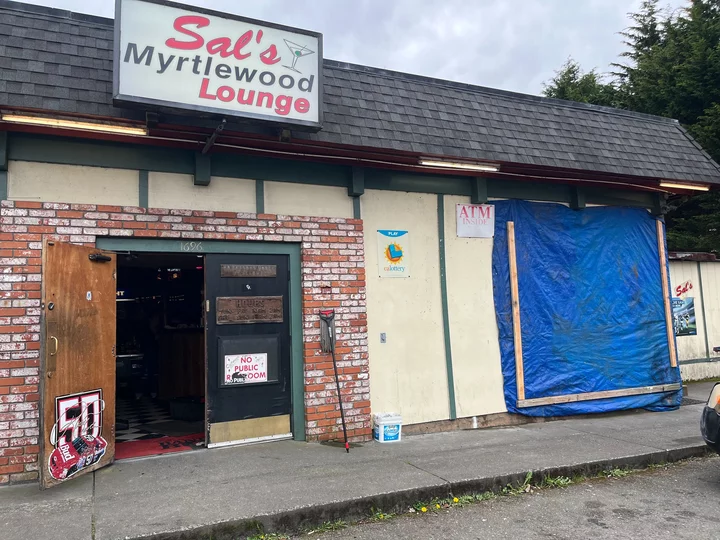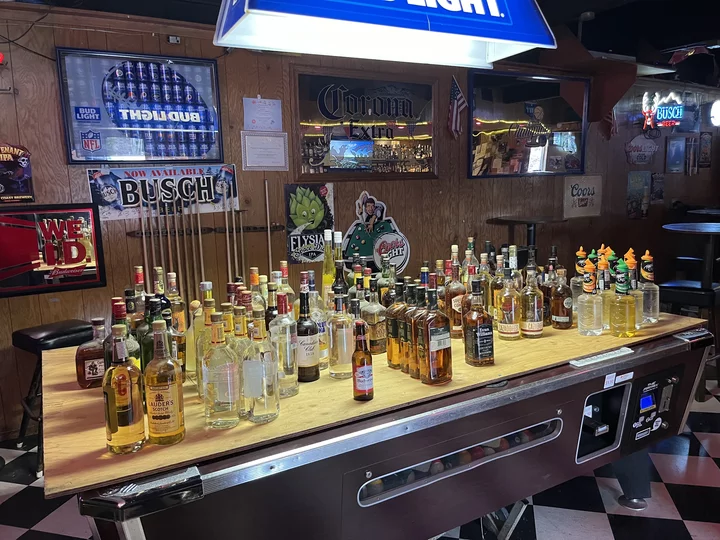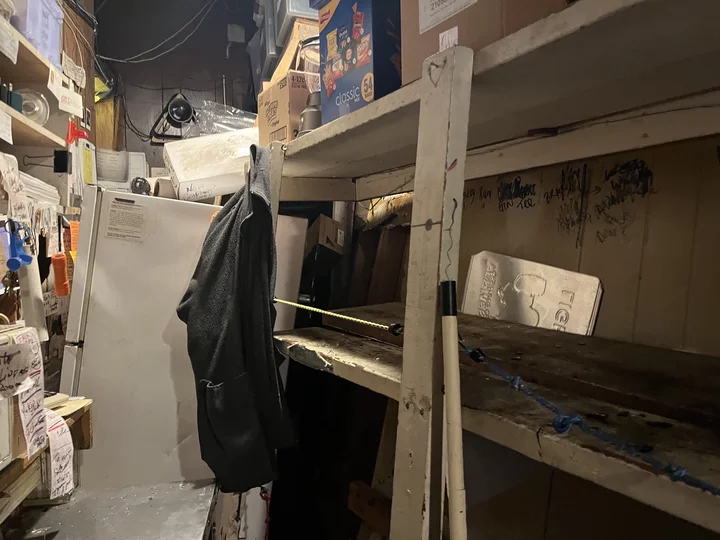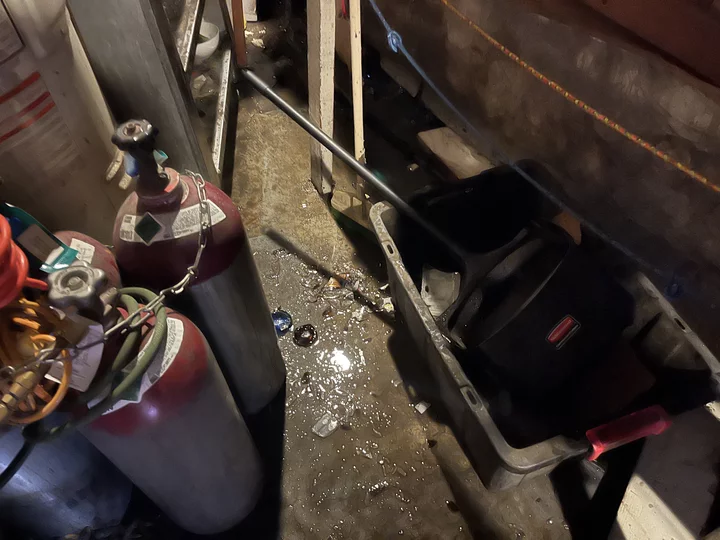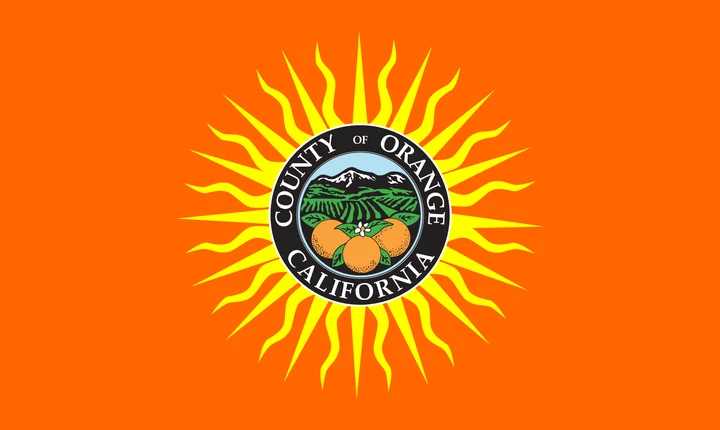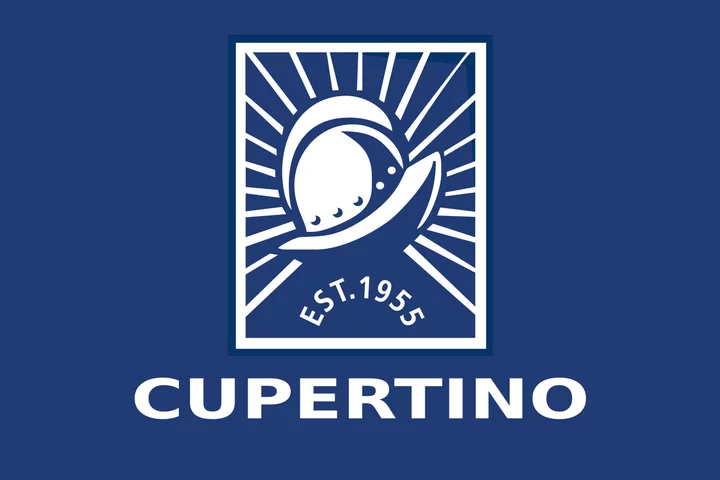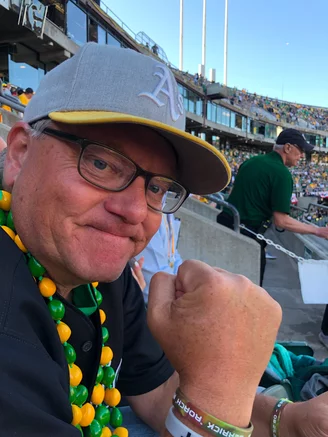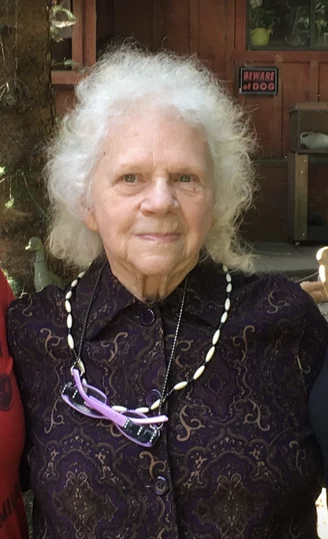HUMBOLDT TODAY with John Kennedy O’Connor | March 21, 2023
LoCO Staff / Tuesday, March 21, 2023 @ 4:40 p.m. / Humboldt Today
HUMBOLDT TODAY: A former Arcata City Councilmember is handed down his restraining order; Governor Newsom has thoughts on how to tackle California’s opioid problems; plus, the largest cash seizure in Del Norte County history. Those stories and more on today’s newscast with John Kennedy O’Connor.
FURTHER READING:
- EUREKA COUNCIL PREVIEW: Several Housing-Related Items on Tonight’s Agenda, Including an Update on Vacation Dwelling Units in the City
- One of the Most Bullshit Things About Humboldt is That We Don’t Have Any Flags
- Homelessness, Rehabilitation and Health Care: What to Know About Newsom’s Legacy Tour
HUMBOLDT TODAY can be viewed on LoCO’s homepage each night starting at 6 p.m.
Want to LISTEN to HUMBOLDT TODAY? Subscribe to the podcast version here.
BOOKED
Today: 6 felonies, 8 misdemeanors, 0 infractions
JUDGED
Humboldt County Superior Court Calendar: Today
CHP REPORTS
No current incidents
ELSEWHERE
Governor’s Office: Governor Newsom slams Trump’s “Con Job” fuel economy standards proposal
Lumberjack News: How to make burnout suck less during finals
Governor’s Office: California announces new online portal to report misconduct by federal agent
RHBB: HCSO Seeks Public’s Help Locating 16-Year-Old Shayde Kelley of Salyer
Sal’s Myrtlewood is Closed For Now After A Car Rammed It This Afternoon
Hank Sims / Tuesday, March 21, 2023 @ 4:16 p.m. / Traffic
Photos: Stephanie McGeary.
#
Sal’s Myrtlewood Lounge, the famed Myrtletown bar, is closed for the time being after a car rammed the place this afternoon at about 2 p.m.
Michael Costanzo, who was bartending at the time, tells the Outpost’s Stephanie McGeary that a driver hit the gas when she meant to brake, plowing her vehicle into the bar’s storeroom. The driver hadn’t been in the bar previously and was, as far as anyone could tell, sober, Costanzo said.
About four people were at the bar when they heard a loud crash, Costanzo said. No one was injured.
As of about half an hour ago, staff were working to clean up the mess and were waiting for their insurance company to arrive. They’re closed until further notice, Constanzo said.
Salvaged bottles.
Caved-in wall.
One of the Most Bullshit Things About Humboldt is That We Don’t Have Any Flags
Hank Sims / Tuesday, March 21, 2023 @ 1:05 p.m. / Our Culture
Humboldt County is a proud place. We’re always going on and on about how special we are, and how everywhere else sucks bad. And there’s a lot of truth to it! This place rules very hard.
It is the greatest place to live in the US of A, but 99 percent of Americans won’t be able to hack it. Which is part of why it is so great.
— Hank Sims (@hanksims) August 15, 2020
It is Bizarro New York: If you can make it anywhere, you can’t make it here. https://t.co/idVgXtWwRJ
But what’s one thing we don’t have? Apart from a Trader Joe’s?
We don’t have any flags.
Humboldt County should have its own flag. Eureka should have its own flag. Arcata should have its own flag. Fortuna should have its own flag. Trinidad should have its own flag. Maybe even, like, Cutten should have its own flag. Orleans should have a flag. There should be flags for every place in the county that has a name and where at least one person lives.
It’s not like this is a completely novel idea. Lots and lots of sub-national and sub-state places have their own flags, even in California. Check out Yolo County’s badass flag:
Yep, even a place as generally miserable as Yolo County has its own flag, and what’s more it has a killer flag.
Orange County also has a great flag, though it gets a little busy around the seal.
It’s not just counties. Lots of cities have their own flags too. Check out Fresno’s cool flag.
Here’s Cupertino.
The point is, lots of places have flags and we do not.
I have contacted various elected officials over the years and demanded that they get going on designating an official flag for the area that they serve. They’ve all blown me off. As I see it, there are two possible reasons for this. Either they lack imagination, or they are afraid of the inevitable dumb culture-war battles that will take place in their chambers during the design phase.
Enough. Today I call upon the public to rise up and demand official flags for – at minimum — the county of Humboldt and every incorporated city therein.
What would your Humboldt County flag look like? Show us a draft in the comments, please. Here’s the Outpost’s Izzy Vanderheiden’s first attempt. She’s completely open to your critique, so let her know what you think of it in the comments, please. Help her improve.
Homelessness, Rehabilitation and Health Care: What to Know About Newsom’s Legacy Tour
Sameea Kamal and Alexei Koseff / Tuesday, March 21, 2023 @ 7 a.m. / Sacramento
Gov. Gavin Newsom speaks at San Quentin State Prison announcing that the facility will be transformed to focus on training and rehabilitation on March 17, 2023. Photo by Martin do Nascimento, CalMatters.
Gov. Gavin Newsom likes to talk about “the California way.” And as he barnstormed the state with sweeping plans to transform its approach to homelessness, criminal justice and health care, he laid out his ideas for what that “way” means — and his legacy.
Throughout his State of the State tour, the governor was often joking and jovial. But on Sunday, the fourth and final day, he took on a more somber tone, standing behind the lectern of a makeshift event space that was once a nine-bed emergency room to talk about improving mental health care.
He emphasized the far-reaching consequences of inadequate care and shared his own experiences, losing someone he’d attended his high school prom with, as well as his grandfather, a veteran, to suicide.
“We own this. We own this moment,” he said. “But we have now the tools and the capacity to turn this ship around.”
As he dives into his second term, Newsom chose the tour in place of the traditional speech to a joint session of the Legislature. In many ways, the events echoed the priorities that he was focused on at this same point in his first term four years ago — before unexpected crises, a recall effort and a seemingly inescapable pandemic scrambled his agenda.
In his first act as governor, shortly after he took the oath of office in January 2019, Newsom signed an executive order aimed at lowering prescription drug costs by directing state agencies to negotiate collectively with pharmaceutical companies for better prices.
On Saturday, he finally announced that California will partner with Utah-based generic drug company Civica to manufacture its own insulin, available for $30 a vial. The $50 million deal is the first major development in a plan Newsom has pursued for the past three years to create a generic label that can challenge an industry he has criticized for charging far too much for life-saving medications.
Two months into his first term, in March 2019, Newsom enacted a moratorium on executions and dismantled the lethal injection chamber at San Quentin State Prison. His decision stunned the political world by quickly reversing a campaign pledge to respect the will of California voters who have repeatedly upheld capital punishment.
On Friday, nearly four years to the day after that order, the governor was back at San Quentin touting his vision to transform California’s oldest correctional facility from the home of condemned inmates to a center for rehabilitation and training before offenders are released back into society.
In public poll after public poll, these issues are not what Californians identify as the most pressing problems in the state. Yet by regularly resurfacing them, steadily chipping away at breakthroughs on his own terms, Newsom suggests that’s what they represent to him — the issues most fundamental to his platform, those with which he seeks to build his legacy.
Governors don’t always get to define their own legacies, however.
Growing public anger over California’s ever more visible homelessness crisis has made this seemingly intractable problem the inescapable force of Newsom’s tenure. He recognized it back in 2020, devoting his entire State of the State speech to the topic, and COVID aside, no other issue has consumed more of his time and political capital since, a stark departure from his predecessor. For opponents — from those who unsuccessfully sought to recall him from office in 2021 to those already seeking to knee-cap any presidential ambitions he may possess — it is perhaps his greatest liability.
That was reflected in the central role that homelessness played in Newsom’s statewide tour, underlying his major announcements on two separate days.
The kick-off event, in Sacramento on Thursday, touted the governor’s successful push to get local officials to adopt more aggressive targets for reducing the number of people living on the streets in their communities.
The final stop, in San Diego on Sunday, launched a campaign to ask California voters to approve a $3 billion bond measure in 2024 for mental health housing and treatment beds. It builds on Newsom’s signature policy achievement from last year: A new court system aimed at compelling people with several mental illnesses, who often languish on the streets, into housing and treatment.
Wrapping up the tour, Newsom noted that the issues he discussed were connected, but especially housing and homelessness.
“I think those two issues truly do represent the twin challenges of this state — our fate and future,” he said Sunday in answer to a CalMatters question. “They’re connected to more of our challenges than any other two issues, and that’s really the thrust of this multi-day effort.”
To achieve all his goals on homelessness and other issues, Newsom needs the buy-in of state lawmakers, local officials and front-line workers.
Still, by orchestrating four days of events across the state instead of delivering a single speech in Sacramento, the governor did succeed on one score: He drew a torrent of media coverage, though reporters were often held a distance away from him at each stop. Newsom’s messaging was amplified by friendly Democratic allies at every event.
Trying to compete, Republicans in the Legislature posted social media videos warning that California is in crisis — on cost of living, crime, homelessness, schools, water and wildfires — and asserting that they have solutions in what they call the California Promise. “Californians want solutions to their everyday problems,” tweeted Assembly GOP leader James Gallagher of Chico. “The Governor’s shiny object routine is tired.”
On each day, and at each event, Newsom was being Newsom — prone to sweeping pronouncements, but less clear on some of the details. At times, he was repackaging or rebranding programs already underway. At others, he urged Californians to imagine a vision for something that doesn’t exist.
Here are some key takeaways and impressions from four days on the road with the governor:

Gov. Gavin Newsom tours a “tiny home” after announcing the state’s plan to address homelessness at Cal Expo in Sacramento, on March 16, 2023. Photo by Miguel Gutierrez Jr., CalMatters
Day 1: Homelessness in Sacramento
One area where California does lead the way is homelessness — but on the sheer numbers as much as on innovative policies. About 30% of people who are homeless in the U.S. were in California in 2022, according to the Public Policy Institute of California.So it makes sense that Newsom’s first stop was Cal Expo, home of the California State Fair, and one site where the state plans to establish a community of “tiny homes” for homeless individuals.
Following his remarks, Newsom ducked into each of the “tiny home” models set up, on green turf with picnic tables off to the side, as the event’s backdrop.
The governor was flanked by industry officials and, as was the case throughout the tour, by state lawmakers and local elected leaders, including San Jose Mayor Matt Mahan, who spoke about a so-far successful pilot program in his Bay Area city.
But how much Newsom reduces homelessness will be a hallmark of his tenure — regardless of how much, or how little, it’s under his control. He acknowledged some limitations: substance abuse crises, mental health and wealth inequality. Success of the tiny homes, he said, depends on local governments ensuring the quality of the services in the long-term.
“The entire homeless strategy in California is not the state of California,” he said. “Homeless strategy is realized not just locally but also begins locally and percolates up.”
The state’s willingness to fund local efforts came after “some tough conversations,” the governor noted. Just a few months ago, he threatened to withhold funding based on plans cities and counties submitted. With cities and counties pledging to get more people off the streets, he announced that his administration plans to free up $1 billion in state money to help them.
Newsom also highlighted programs that he launched during the pandemic: Project Roomkey, which places individuals in motel and hotel rooms as a short-term solution, and Project Homekey, where the state buys properties that can be converted into homes.
The “tiny home” program is not “‘it.’ This is a component of a larger strategy,” he said, pointing to the $3.4 billion he put in his proposed budget to address homelessness, despite what he projected as a $22.5 billion deficit.
For some, Newsom’s ambitious plan wasn’t enough. Senate Republican Leader Brian Jones of El Cajon called it another “Band-Aid on a crisis.”

A row of “tiny homes” on display at Cal Expo. Gov. Gavin Newsom announced the state’s plan to address homelessness on March 16, 2023. Photo by Miguel Gutierrez Jr., CalMatters
But for others, Newsom’s proposals didn’t go far enough. Just before the governor’s event, the California State Association of Counties urged state lawmakers to set up a new system for routing state homelessness funding through regional plans with clear responsibilities assigned to local governments.
The 1,200 “tiny homes” will go to Los Angeles, San Diego County, San Jose and Sacramento — places Newsom said showed “enthusiasm.” But at least for now, the program excludes San Francisco and other cities mired in crisis.
Day 2: Criminal justice at San Quentin
San Quentin State Prison is already considered a model for prisoner rehabilitation in California — attested to by inmates made available to the press. Programs such as a news service and a 20-week coding course have been transformational, and at a minimum, offer a place outside their cells to breathe. Inmates at other state prisons request transfers to San Quentin for the opportunities.
So at Friday’s event, when the governor spoke in sweeping terms about a plan to “transform” the prison into a “national model” for rehabilitation, questions prevailed: How long will it take? How much of the Scandinavian model will it emulate?
But the big question came from Steve Brooks, editor of the San Quentin News: How will this model help inmates with overcrowding and poor living conditions? And would the Scandinavian model mean violent offenders wouldn’t get to take part in the rehabilitation programs?
“No, quite the contrary,” Newsom replied, speaking inside a warehouse that is to be converted into a training center. “And I don’t refer to it as the Scandinavian model. This is the California model, the California way…. I’m for people that are committed, not passively interested, in changing themselves, and in turn helping us keep our communities safe and changing our communities as a consequence.”
The new facility will be designed by an advisory committee that includes crime victims, formerly incarcerated people and academics, the governor’s office said. Newsom is also asking the Legislature for $20 million for the plan.
Asked whether he plans to ask voters to make permanent his moratorium on the death penalty, Newsom didn’t commit to a ballot measure. As of March 8, there were 668 people sentenced to death in California.

Inmate Gregory Eskridge (right) and others reporting for the San Quentin News attend Gov. Gavin Newsom’s press event at San Quentin State Prison announcing the transformation of the facility to focus on training and rehabilitation on March 17, 2023. Photo by Martin do Nascimento, CalMatters
San Quentin currently houses 3,906 people, with security levels ranging from medium to maximum security. One is Angelo Mecchi. Newsom said that on a visit several weeks ago, Mecchi saw him and flagged that they’d played in the same Little League in Marin County.
“That spoke to me on a different level,” Newsom said. “We are many journeys, many parts — but one body. When one part suffers, we all suffer.”
Day 3: Health care costs in Downey
Three days into the tour, Newsom seemed particularly upbeat about Saturday’s announcement: Securing a contractor to produce insulin, bringing the costs down for patients with diabetes to $30.
“What this does is a game-changer,” he said. “This fundamentally lowers the cost, period, full stop.”
“I’m just really proud of this,” he added later, standing in front of a row of refrigerators that contained insulin medications at a Kaiser Permanente warehouse.
Advocacy groups were just as excited. “California’s investment to directly manufacture prescription drugs is a game-changer with national impact,” Anthony Wright, executive director of Health Access California said in a statement. “Even a modest decrease in the cost of key drugs could save hundreds of millions or even billions of dollars.”

A girl shows off her insulin pod that continuously gives her insulin throughout the day to help manage her Type 1 diabetes. Photo by Anne Wernikoff, CalMatters
If manufacturing begins as planned later this year, the state would then seek approval from the Food and Drug Administration and start distributing early next year.
The governor said the long-term plan is to have Civica make the insulin in California. “The future happens here first. We are America’s coming attraction,” he said during what turned out to be the shortest of the four stops.
And he doesn’t plan to stop with insulin. Newsom disclosed that the state’s CalRx is exploring making its own naloxone (better known by its brand name Narcan) to treat opioid overdoses.
He also said this push to lower health care costs builds on California’s record of universal health care regardless of pre-existing conditions or immigration status.
“If we are arguably the fourth largest economy on planet earth, we’ve got to start acting like it,” he said, adding one of his common boasts: “Only in California. Eat your heart out, the rest of the United States.”
Day 4: Mental health in San Diego
In between the official tour events, Newsom made other stops, including at the City of Refuge social service nonprofit in Sacramento, at the Los Angeles River with Assembly Speaker Anthony Rendon, and at the Scripps Institution of Oceanography in San Diego.
So, on the final day of the tour, Newsom seemed a little less energized before his turn to speak at Alvarado Hospital Medical Center about his mental health initiative.
Mark Ghaly, secretary of the California Health & Human Services Agency, who accompanied Newsom on both Saturday and Sunday, took on some of the more detailed policy questions, such as how many beds are needed.
Besides the $3 billion bond issue to build new treatment centers to treat 10,000 more people a year, Newsom wants to redirect another $1 billion from an income tax on millionaires — approved by voters in 2004 — to operate them. That concerns county officials, who say any loss of state behavioral health money could also cost them federal matching funds.
The governor’s packed schedule meant zipping off quickly to the next event, and his team declined an interview request for Newsom to discuss the tour as a whole.
And while details of the tour stops were closely guarded, protestors managed to get word of his Sunday appearance. About 10 people stood outside the hospital with signs asking Newsom to speak out against the construction of a controversial barrier at Friendship Park, which straddles the border of California and Mexico.
“The governor of California should understand this is not a sideline issue,” said John Fanestil, a member of the Friends of Friendship Park community group, who was at the protest. “It should be his central issue on a visit to San Diego.”
Newsom hasn’t made an official statement, but told reporters at the border Sunday that he was trying to understand the Biden administration’s support for the barrier.
But back on message, he also announced $30 million to beef up the California National Guard’s efforts to stop drug trafficking, especially fentanyl — and to shore up his legacy, this time on the opioid crisis.
###
CalMatters.org is a nonprofit, nonpartisan media venture explaining California policies and politics.
OBITUARY: Christopher Justin Hayes, 1975-2023
LoCO Staff / Tuesday, March 21, 2023 @ 6:56 a.m. / Obits
It
is with heavy hearts that the family of Christopher Justin Hayes
announces his passing on Monday, March 13, 2023, at the age of 47. A
loving brother, friend, and father of three, Chris was born on June 25,
1975 in Placerville, to Samuel and Susan Hayes (Tripp). He was an
accomplished artist who expressed himself through his art and tattoo
work for the last 32 years up and down the west coast and Tennessee.
He raised two sons, Corbin and Eamon, and daughter, Freya with their
mother, Cassiopeia Reuter.
Chris had a passion for art, fishing and skateboarding, to name a few. His career was spent creating personalized tattoo experiences around the world while immortalizing tattoo culture. He expressed himself through his artwork and did everything with all his heart. He wanted nothing more in this world than to be loved and he gave 100 percent doing just that. Chris had an enormous heart and an unfaltering love for all those he crossed paths with. Once you were a part of his life, he would always be with you.
He was a kind soul that is looking down on us now, free from burden, and is saying, “This shit sucks huh, Haha!” He never did anything half-assed. He loved, lost, cared and fought with everything he had. He was known for his quick wit, his infectious smile, his laugh, and his kind and compassionate spirit. He was also known to raise some hell from time to time.
Here is a quote from his favorite writer:
“Death is nothing, brother, it’s life that’s hard.”- Charles Bukowski
He is preceded in death by his grandparents O’Neal and Sue Hayes and Don and Marilyn Ferguson. He is survived by his parents, Samuel Hayes, Bismarck N.D., Susan Tripp (Wesley) of Placerville; three children — Corbin, Eamon, and Freya Hayes of Gualala; his siblings Melissa Lundin (Bismarck, N.D.), Michael Hayes (Chandler, Arizona), Corey Hayes (Bismarck, N.D.) and Erin Rose (Covington, Tenn.); three nieces — Ieree and Mesa Lundin of Bismarck and Olive Rose, Covington; and several cousins and close friends he called family.
Chris’s friends and family would like to personally thank the Hoopa Valley Community for their outpouring of love and endless support of Chris over the years. They would also like to extend their personal gratitude to Tim. They are forever grateful, and their love is with you as his was with Chris.
A celebration of life and spreading of his ashes will be held at a later date.
In lieu of flowers, please donate to a Drug and Alcohol Awareness Program.
###
The obituary above was submitted on behalf of Chris Hayes’s loved ones. The Lost Coast Outpost runs obituaries of Humboldt County residents at no charge. See guidelines here. Email news@lostcoastoutpost.com.
OBITUARY: Michael Andrew Scott, 1969-2023
LoCO Staff / Tuesday, March 21, 2023 @ 6:56 a.m. / Obits
Michael Andrew Scott
February 23, 1969 – March 11, 2023
With the most profound sadness in our hearts, we announce the passing of our dear, sweet Michael Andrew Scott, beloved son, husband, father, Papa, and friend. Michael passed away on March 11th in Eureka after a short and aggressive battle with cancer. Mike’s smile is one of the things we will all remember. So fortunate were those who were on the receiving end of that smile. He was the perfect welcoming host, ensuring everyone around him was comfortable, entertained, fed, and well cared for. Everyone felt special when in his presence. But, as they say, gone too soon, way too soon.
Mike was born in Eureka on February 23rd, 1969, to his loving parents, Joe and Dodie Scott, joining his older brother Greg to form the perfect family of four. The family spent much time at Trinity Lake on the houseboat Joe and Dodie had built. So many friendships were forged, and some of the best memories were created. Michael loved to fish and ski, and it was always the one thing he wanted to share with his kids, so much so that in recent years he bought a ski boat with plans of sharing his love of the lake with his grandkids, family, and friends. When Mike was in the hospital, the nurse asked him what his long-term goals were besides his health, and he said, “to get back to the lake,” so with that, we plan to do just that…
As with his own children, Mike attended Ridgewood and Cutten Schools, Winship Junior High, and Eureka High School, graduating in 1987. Here, he formed lifelong friendships with many, including Jay Shamp, Scott Avila, Brian Jensen, and Randall Davis. During these formidable years, he developed his love of baseball, spending many weekends traveling the state with his parents and attending tournaments. He also played football for EHS and had was a loyal fan of the Dallas Cowboys. All who knew him knew of his lifelong passion for both sports and his favorite team, the Oakland A’s. But it didn’t stop there. Mike continued his involvement in baseball when he started coaching his son Chris at CRRA and then later at Redwood Empire Little League with all three children Chris, Braedon, and Hunter. His time on the fields forged long-lasting friendships with the players, coaches, and parents—you know who you are.
Michael was sometimes allowed to hang out with his older brother and friends. Time spent with good dudes like Jesse Conn and Steve Gutierrez, to name a few. Michael was a bit younger, so you could imagine the torment he might have endured, but he always looked up to Greg’s buddies and considered them family. Through these friendships, he also met Paula and, eventually, they found their way together through their mutual love of golf and all things competitive. They spent many weekends on the golf courses around Humboldt County, rain, or shine, just enjoying the game and time with friends, sometimes followed by a round of blackjack or ping pong at Forbes Avenue with friends Jay, Brian, Scott, Randall, Johnny, Mot, Danny, Debbie and Randy, Dana and Teri, and the list goes on. Michael always came out on top in the games of chance, and it wasn’t unusual to see him sporting a new pair of shoes or clothes the day after a serious card game!
Eventually, Paula and her son Chris ended up in Redding with Mike due to job changes, and it was there that their relationship grew and the family of three was solidified. Paula found a soulmate in Michael that she had not had before and someone who held her heart so close and one she could share her fears, her deepest secrets and her dreams and wishes for their future with the utmost trust in him to hold them dear. He was loyal to the core and always stood by her side even when it wasn’t easy. Michael loved his little family, bringing Chris under his wing and taking his role as a parent figure very seriously. In August 1997, Michael and Paula welcomed their second child, Braedon, and in true party fashion with a crowd of people standing by! Braedon was the twinkle in Michael’s eye and was his mini-me. The short 2 years in Redding raising the boys alongside dear friends Chad and Diana Coleman were some of the best days for all of us, at the lake, by the pool, snow skiing, or just playing board games until the sun came up.
In 2000, Michael and Paula welcomed their little Hunter Rae into the family fold. Watching Michael meet his daughter for the first time was pure love. He adored his daughter and was so very connected to her. Her kindness and empathy are gifts from her father that live on through her. The last family gathering, and possibly one of Mike’s proudest moments, was when we attended Hunter’s graduation in San Diego from CSU San Marcos this past May. Our family and close friends gathered for a 4-day celebration with beach bonfires, boat rides, and baseball games. These days will live on in our memories, like so many others. And as Hunter said upon his passing, “How lucky am I to have had the coolest Dad ever and have him be my best friend?”.
Michael loved playing golf. He especially loved league night at the Eureka Muni golf course. For the past few years, he sponsored his own team, The Gang Green. The team included his two sons, Chris and Braedon, as well as Aaron Walker, Kenny Gray, and Zack Glidden, and he loved competing against the teams of Derek Rocha and Rich Bartlett. He couldn’t wait for Wednesday nights! He also loved golfing with his brother-in-law Howie (better known as MFE) at Baywood CC or on our many trips to Santa Rosa. His last round of golf was with his dear friend Michael DelGrande. It was probably the most difficult 9 holes of golf he played but it was so important for him to play with his friend one last time and he was so proud of that accomplishment. Michael also was fortunate to attend the US Open in Pebble Beach in 2019, a highlight of Michael’s golf experiences. Michael spent 2 hours watching Tiger Woods and Justin Thomas putting and shooting the shit. Michael was over the moon to be in their presence.
In Michael’s work life, he believed that customer service was bar none. Grocery was in his blood and, in fact, in his lineage as far back as the 1700s. He began working when he was just 15 years old, for Kacy’s Market (Murphy’s), Mark ‘N Save, Safeway, and Sunset Market in Redding. Mike then ended up in grocery and liquor sales, spending most of his sales career with Young’s Market Company and Kellogg’s. He also owned a window cleaning business since 2001, bringing him the most joy in his work life. Before his illness, Michael worked at the Eureka Co-Op and planned to grow and retire with the company. He loved helping people and seeing a smile on their faces.
Michael had no idea how his life would change when blessed with twin Grandbabies, Charlie Rae and Lotus Kyle. But the beauty of being a grandparent showed on his face every day when he would pick them up from preschool in the wagon and walk them back to our house for a day of fun and beautiful chaos. Charlie would always say, “Papa, I love you with my whole heart,” and boy was that true for Michael too.
He leaves behind his loving wife, Paula, of 24 years (although friends for many more); children Chris Gutierrez, Braedon Scott, and Hunter Scott, all of Eureka; grandchildren Lotus and Charlie Rae Gutierrez of Eureka; mother Dodie Scott of Redding; Aunt Nancy Rounds, Uncle and Aunt Bob and Beverly Sholes; sisters-in-law Jamie Pavlich Walker (husband Howie Walker and children Devin and Aaron), Cindy McIntosh (husband Michael and daughters Logan, Jamie and Libbie); cousins Debbie Frazier and Wendy Calbazar; co-parent and lifelong friend Steve Gutierrez; special friends Mike and Becky DelGrande and an endless list of friends and co-workers. Mike was preceded in death by his father, Joe Scott, in February 2020, and his brother Greg Scott in February 2019.
Michael still felt the need to be a proper host right up until his last day, when he was surrounded by a house full of beloved family and friends, both new and old.
Services will
be held on Saturday, May 6th, at 1 p.m. at the Pavlich Ranch -3745 Pennsylvania Avenue in
Eureka. A memorial golf tournament will be held the day prior, with details to come. [UPDATE FROM THE FAMILY: “Due to unforeseen circumstances we will be moving the memorial to Old Growth Cellars on 1945 Hilfiker Lane in Eureka.”]
The family wishes to thank ….
Dr. Thomas Rydz for his guidance, attentiveness, compassion, and encouragement; Thomas you are a blessing to our community!
Jenny Tehan, RN and friend, for going above and beyond what is expected of any nurse and friend. We are so fortunate to have you in our corner and love you dearly!
Dr. Steinberg, for excellent medical care throughout and compassion and guidance.
Patty Kubala, MA for the medical support all the way till the end, and the love and care for our entire family.
Dr. Join Luh of the radiation oncology department for his guidance and proactive approach. You put ‘care’ back into your job description and this community is better for having you in it.
Dr. Sageman and the ICU team for their undying optimism and excellent care and for maintaining Michael’s dignity throughout.
Beckie McCanless, RN, and all the nurses of the medical oncology team for their outstanding care and kindness.
###
The obituary above was submitted on behalf of Michael Scott’s loved ones. The Lost Coast Outpost runs obituaries of Humboldt County residents at no charge. See guidelines here. Email news@lostcoastoutpost.com.
OBITUARY: Maryann Hatfield, 1932-2023
LoCO Staff / Tuesday, March 21, 2023 @ 6:56 a.m. / Obits
Maryann Hatfield was born in 1932 in Buffalo, New York. She grew up in Buffalo and met Gordon Hatfield at a local church they both attended. They got married and had four children — Sharon, Karon, Donna and Walter.
Although Maryann spent the first part of her life on the East Coast, she ultimately saw herself as happiest in California. So she moved to the Oakland/Bay Area in the early 1960s, where she raised her last daughter, Tari. She also obtained a bachelor’s degree at Hayward University and worked as a Senior Accountant for the City of San Pablo. In the late 1980s, Maryann chose to move to the Pacific Northwest: specifically the foggy, tree-lined, historical and coastal town of Klamath. All of her children eventually joined her in the Pacific Northwest and moved to Del Norte County or Humboldt County shortly thereafter.
She not only helped raise five grandchildren, but became a staple in her small community through both her career and volunteer work. If you knew Maryann, you might remember her ornery but hilarious attitude about life, her love for family and pets, her passion for continuing an education and career in local Native American culture through her work at the Elk Valley Rancheria. Or maybe she kicked your butt while playing bridge at the Del Norte Senior Center. However you may have crossed paths, you knew you would leave a conversation with Maryann in a lighter, brighter mood and potentially some cat fur on your sweater.
Maryann helped provide her friends and family with a sense of belonging and will undoubtedly be missed by everyone she leaves behind. Don’t worry though, she would remind you that not everyone has the opportunity to live to the ripe, old age of 90 and laugh about it. In Crescent City, on March 12, 2023, surrounded by loved ones, our Nana left this world to join her dear family members and friends who preceded her in death, including but not limited to: her beloved grandmother who helped raise her, both her parents, her children Sharon Freese, Karon Hatfield, Donna Lin, and Walter Hatfield, her grandchildren Audrey Godfrey, Jordan Freese and Spencer Godfrey. She is survived by her daughter Tari Hatfield, and two granddaughters, Kaitlin Canant and Hannah Freese, in addition to close friends and caretakers who helped ensure she lived out those last few years of life in happiness.
This world won’t be the same without you, Grandma. We love you and may you rest in peace. In lieu of donations or flowers, please volunteer or donate to your local animal shelter. Our grandmother was surrounded by animals her whole life, and it would be an honor to her memory.
###
The obituary above was submitted on behalf of Maryann Hatfield’s loved ones. The Lost Coast Outpost runs obituaries of Humboldt County residents at no charge. See guidelines here. Email news@lostcoastoutpost.com.

